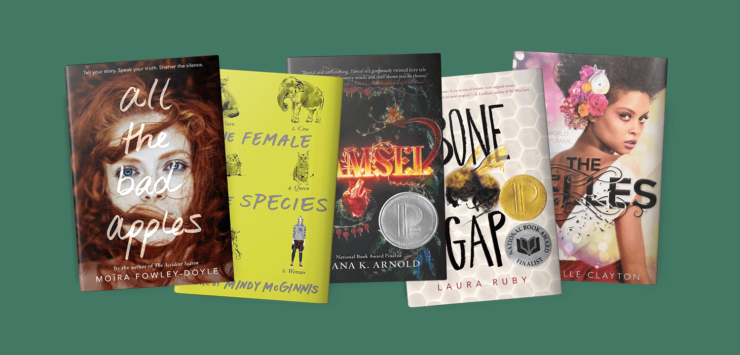Heroines in young adult fantasy and horror are often fighters, out to save the world, defeat the bad guy, and vindicate themselves in some way. But there’s a new trend that’s emerging, one that takes the idea of what it means to be a heroine and tilts it: reclamation. In these stories, girls have experienced some kind of transgression of the self, be it an idea imposed by a force outside themselves or a physical violation of some kind, so that the deeper themes have to do with taking back what was stolen on every level.
It bears repeating that historically speaking, women have had very little control over what happens to them. Classics like The Awakening, Beloved, The Bell Jar, and memoirs like Lucky have taken hard looks at various violations of body, mind and/or spirit and have given readers a pathway within which to process those experiences. But taking on this topic within young adult literature, specifically through the lens of fantasy and horror, is giving younger readers an opportunity to sift through everything from systemic homophobia to the male gaze to aggressions to rape. This relatively new type of story, part feminist revenge fantasy, part catharsis, gives the reader a chance to delineate important boundaries and cheer along with their protagonists when they firmly draw the line.
These are five of the best. If you want stories that are gripping, uncomfortable, creepy, and ultimately triumphant, these are for you:
Damsel by Elana K. Arnold
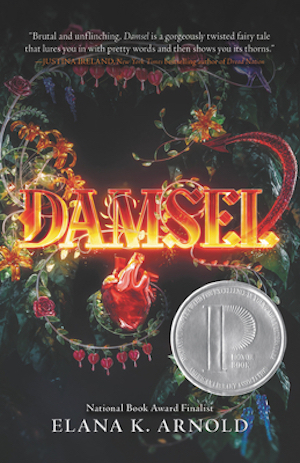
At first blush this looks like a familiar story, one of a girl who awakens to find herself being rescued from a dragon’s lair to a castle by a handsome prince. But things quickly take a turn. She has no memory of a self, no family to speak of, and doesn’t even have clothing. She is given her orders, expected to submit to the prince’s will in all ways, to bear him an heir and carry on the tradition: prince saves girl from dragon, girl belongs to prince, girl has sex with prince, becomes queen, and never leaves the castle again. Happily ever after? Except that this damsel is far from happy. She would like to know where she came from and why she can’t remember who she is, or was. She has questions about the system, how this all works, how one queen leads into the other, and she does not take kindly to the prince’s advances. As the balance of power between them shifts and the prince sets out to show her that she has none, she begins a relentless search for herself that puts herself in danger, but perhaps not as much as the prince and the entire system he represents. This is an excellent choice for anyone who needs a visceral warrior cry.
The Belles by Dhonielle Clayton
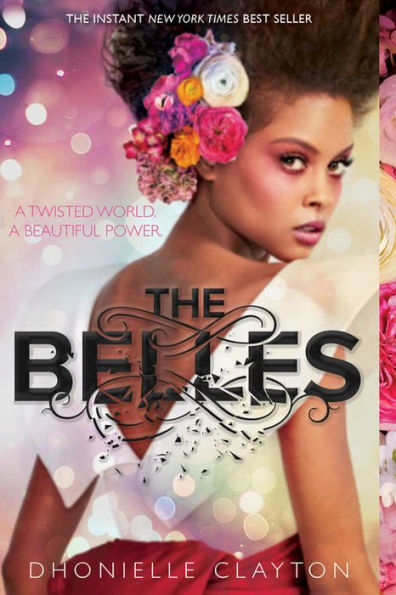
Camellia’s world is one that is driven entirely by physical beauty. The more physically pleasing a woman, the more desirable, to the point that the entire social structure is built upon how women look and the ways in which their beauty can be manipulated (nothing at all like our current reality, of course). This structure is entirely dependent on the special beauty-enhancing powers of the Belles, and Camellia is the most talented of them all. Set in sumptuous Orleans, one could be distracted by the rich details of the entrancing world, but they only serve as a delicious package for the real questions put forth as Clayton explores the commodification of women’s bodies, racial identity, and gender equality. As in Damsel there are systemic questions implicit in the story, but here it’s less personal allegory as more time is spent developing a complex political and social structure. Camellia is powerful because she is born to create beauty with a touch of her hand, but it costs her emotionally and physically. The powers that be, in this case the queen and princess, have perpetuated a long-standing structure that keeps the Belles apart from the rest of society, whose lives are structured much like a high-class brothel. The ways in which they’re traded and controlled at great physical cost to them reminds the reader not only of the ways in which women are driven to unrealistic perfection and toxic competitiveness, but that none of it comes for free. The fact that the energy required for such beauty enhancements plays out as a sort of magical skill in this story only literalizes the pressure that most women (and certainly girls) experience on a daily basis. Camellia’s journey is devastating and sometimes difficult to bear, but it’s also a joy to travel with her as she displaces an entire society by refusing to be a cog in the machine in favor of exploring and owning her own powers.
All the Bad Apples by Moïra Fowley-Doyle
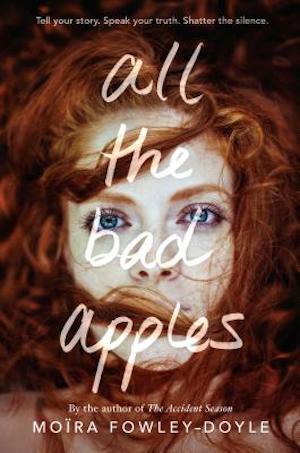
Deena’s sister has just died, or at least that’s what she’s been told. She’s also just accidentally come out to her homophobic father and been ridiculed at school for being queer. Driven by a need to escape her family as powerful as her determination to find her sister, Deena and her friends dive into a quest to break her family curse. Their journey sends them from Dublin to Sligo to Galway, and back nearly two-hundred years through generations of women who have suffered due to the judgments imposed upon them by a harsh and unforgiving society. Through the ghosts that came before her and her determination to prove her sister isn’t dead, Deena contends with such historical horrors as Sapphic relationships that end in murder, the consequences of being an unwed mother in a conservative society, and some of the methods used to control and humiliate women who refused to conform. These are well-researched historical facts placed into a fictional fantastical context to great effect. Artfully executed, Fowley-Doyle wraps those difficult topics into a compulsive read featuring banshees, ghosts, and ever-present apples. Careful though. This one hurts.
The Female of the Species by Mindy McGinnis
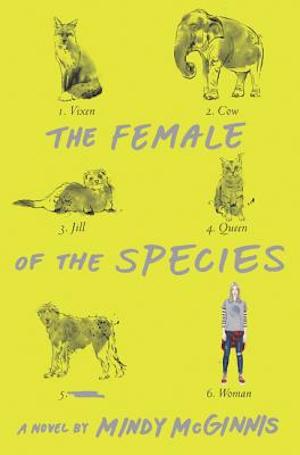
Alex’s sister was murdered and now she’s the girl with the sister found in parts throughout the woods. But what Alex’s new friends don’t know is that she has turned violent herself, and that her determination to exact vengeance on anyone who might harm a girl the way her sister was harmed has made Alex the most terrifying of all. As Alex begins to explore her very first attempt at a real relationship as well as a normal teen relationship, she hopes to leave her violent side behind. Unfortunately, the world is built to tug at her compulsions. She can’t allow date rape to stand, or molestation, or even the casual jokes many girls have learned to accept as part of being female. The question becomes whether Alex has the capacity to be “normal” at all. Creepy, disturbing, and highly cathartic, this story will force you to face the violation and aggression girls are filtering daily. Through Alex’s gaze, what’s considered acceptable is magnified, judged, and punished accordingly. This story is gritty, brutal, reeks of truth, and will haunt you long after you turn the last page. It has made me a hardcore fan of everything Mindy McGinnis has to offer.
Bone Gap by Laura Ruby
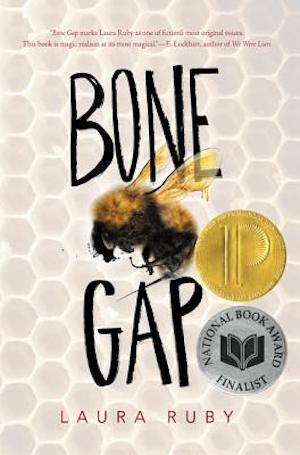
Beautiful Roza has been kidnapped by a terrible man and taken away from her new home in Bone Gap, Illinois. Only Finn, the little brother of the man who loves her, knows what happened to her, but he can’t remember the man’s face so no one believes him. Set partially in a familiar rural American setting and partially in a fantasy prison, Bone Gap is a subtle retelling of the Persephone myth, in which Roza’s abduction echoes her kidnapping to the underworld by Hades. The magical realism comes on slowly so it takes time to realize this is no normal man and Roza herself is no normal woman. Using Finn as a vehicle, Bone Gap explores the idea that when we are seen only for our faces we are sometimes not seen at all. In other words, when human beings aren’t limited to what can be seen with the eye, what is beneath the surface can be truly appreciated. Beautifully told, compelling, and heartbreaking, Bone Gap is a modern-day fairy tale that was a National Book Award finalist and a Michael L. Printz winner for excellence in young adult literature.
 Estelle Laure (pronounced lore/lor) is the author of critically-acclaimed books for young people. She is best known for her novel, This Raging Light, which has been translated into twelve languages. She has five forthcoming young adult novels, including Disney’s City of Villains series (book one fall 2021) and Mayhem (July 14, 2020) with Wednesday Books/St. Martin’s. She is also very pleased to be fulfilling a dream by stepping into the world of picture books, the first of which will be out with HarperKids in 2021. In addition to writing her own stories, Estelle is an editorial consultant, writing coach, and educator.
Estelle Laure (pronounced lore/lor) is the author of critically-acclaimed books for young people. She is best known for her novel, This Raging Light, which has been translated into twelve languages. She has five forthcoming young adult novels, including Disney’s City of Villains series (book one fall 2021) and Mayhem (July 14, 2020) with Wednesday Books/St. Martin’s. She is also very pleased to be fulfilling a dream by stepping into the world of picture books, the first of which will be out with HarperKids in 2021. In addition to writing her own stories, Estelle is an editorial consultant, writing coach, and educator.










